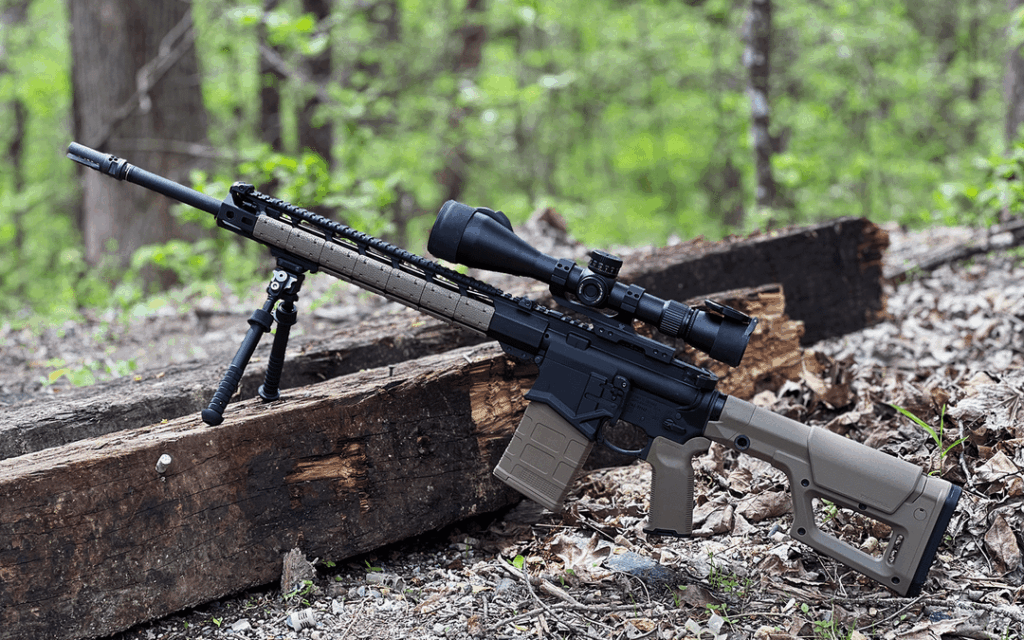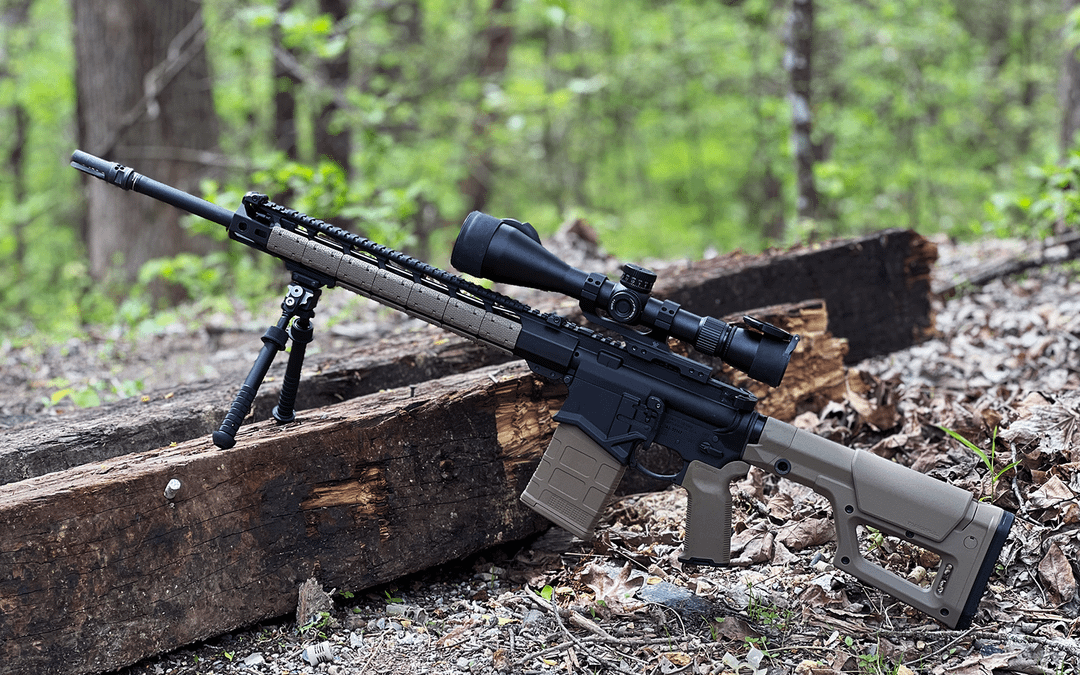
Ruger SFAR vs. Saint Victor: A Detailed Comparison for AR-15 Enthusiasts
The AR-15 platform is known for its modularity, versatility, and widespread availability. With so many manufacturers and models on the market, choosing the right AR-15 can be a daunting task. Two popular options that often come up in discussions are the Ruger SFAR (Small Frame Autoloading Rifle) and the Saint Victor by Springfield Armory. Both rifles offer compelling features and cater to different needs. This comprehensive comparison will delve into the specifics of each rifle, helping you make an informed decision.
Overview of the Ruger SFAR
The Ruger SFAR is a relatively new entrant to the AR-15 market, but it has quickly gained attention for its innovative design. The primary selling point of the SFAR is its chambering in 7.62x51mm NATO (.308 Winchester) while maintaining a size and weight comparable to a standard 5.56mm AR-15. This is achieved through a smaller receiver and other design modifications.
Key Features of the Ruger SFAR:
- Caliber: 7.62x51mm NATO (.308 Winchester)
- Compact Size: Similar dimensions to a 5.56mm AR-15
- Weight: Relatively lightweight for a .308 AR
- Adjustable Gas Block: Allows tuning for different ammunition and suppressors
- M-LOK Handguard: Provides ample space for accessories
- Ruger Two-Stage Trigger: Offers a crisp and consistent trigger pull
Overview of the Saint Victor
The Saint Victor series from Springfield Armory is a well-established line of AR-15 rifles known for their quality, reliability, and value. The Saint Victor rifles are available in various configurations, including different barrel lengths, handguard styles, and furniture options. They are designed to be versatile and suitable for a wide range of applications, from recreational shooting to home defense.
Key Features of the Saint Victor:
- Caliber: Typically 5.56x45mm NATO (.223 Remington), but other calibers may be available in certain models.
- Lightweight Design: Designed for maneuverability and ease of handling.
- M-LOK Handguard: Provides mounting points for accessories.
- Nickel Boron Coated Trigger: Offers a smooth and reliable trigger pull.
- Enhanced Bolt Carrier Group: Designed for increased durability and reliability.
- Accurized Muzzle Brake: Helps reduce recoil and muzzle rise.
Detailed Comparison: Ruger SFAR vs. Saint Victor
To provide a thorough comparison, let’s examine the Ruger SFAR and the Saint Victor across several key categories:
Caliber and Ballistics
The most significant difference between these two rifles is the caliber. The Ruger SFAR is chambered in 7.62x51mm NATO (.308 Winchester), while the Saint Victor is primarily chambered in 5.56x45mm NATO (.223 Remington). This difference has a profound impact on the rifle’s ballistics, recoil, and overall performance.
- Ruger SFAR (.308 Winchester): The .308 Winchester cartridge offers significantly more energy and range than the 5.56mm. It is better suited for hunting larger game, engaging targets at longer distances, and penetrating barriers. However, it also produces more recoil and requires a heavier rifle to manage effectively.
- Saint Victor (5.56x45mm NATO): The 5.56mm cartridge is lighter, faster, and produces less recoil than the .308. It is a popular choice for recreational shooting, home defense, and situations where maneuverability and rapid follow-up shots are important. The 5.56mm is also generally less expensive to shoot than the .308.
Size and Weight
One of the key innovations of the Ruger SFAR is its ability to chamber the .308 Winchester cartridge in a platform that is similar in size and weight to a standard 5.56mm AR-15. However, there are still some differences in size and weight compared to the Saint Victor.
- Ruger SFAR: While Ruger has managed to minimize the size and weight of the SFAR, it is still slightly larger and heavier than a typical 5.56mm AR-15 like the Saint Victor. This is due to the larger receiver and heavier components required to handle the .308 cartridge.
- Saint Victor: The Saint Victor is designed to be lightweight and maneuverable. Its smaller receiver and lighter components make it easier to carry and handle, especially in close quarters.
Ergonomics and Handling
Both the Ruger SFAR and the Saint Victor are designed with ergonomics in mind, but there are some differences in their handling characteristics due to their different calibers and sizes.
- Ruger SFAR: The SFAR’s .308 chambering results in more felt recoil compared to the Saint Victor. While the adjustable gas block helps to mitigate some of this recoil, it is still a factor to consider. The larger size of the SFAR may also make it slightly less maneuverable for some users.
- Saint Victor: The Saint Victor’s 5.56mm chambering results in significantly less recoil, making it easier to control and shoot accurately, especially for extended periods. Its lightweight design and smaller size also contribute to its excellent maneuverability.
Features and Components
Both rifles come with a variety of features and components designed to enhance their performance and usability.
- Ruger SFAR: The SFAR features an adjustable gas block, which allows users to tune the rifle’s gas system for different ammunition and suppressors. It also comes with a Ruger Two-Stage trigger, which provides a crisp and consistent trigger pull. The M-LOK handguard provides ample space for mounting accessories.
- Saint Victor: The Saint Victor features a nickel boron coated trigger, which provides a smooth and reliable trigger pull. It also has an enhanced bolt carrier group designed for increased durability and reliability. The accurized muzzle brake helps to reduce recoil and muzzle rise. The M-LOK handguard provides mounting points for accessories.
Accuracy
Accuracy is a crucial factor for any rifle. Both the Ruger SFAR and the Saint Victor are capable of delivering good accuracy, but there are some differences to consider.
- Ruger SFAR: The SFAR’s .308 chambering and longer barrel (typically 16 inches or longer) can contribute to excellent accuracy at longer ranges. However, the increased recoil may make it slightly more challenging to shoot accurately, especially for inexperienced shooters.
- Saint Victor: The Saint Victor’s 5.56mm chambering and generally lighter weight can make it easier to shoot accurately, especially at shorter to medium ranges. The reduced recoil also helps to maintain accuracy during rapid fire.
Reliability
Reliability is paramount for any firearm, especially one intended for self-defense or duty use. Both Ruger and Springfield Armory have a reputation for producing reliable firearms.
- Ruger SFAR: The SFAR is a relatively new design, so its long-term reliability is still being evaluated. However, Ruger is known for its robust engineering and quality control, which suggests that the SFAR should be a reliable rifle. The adjustable gas block also helps to improve reliability by allowing users to tune the gas system for different ammunition.
- Saint Victor: The Saint Victor has a proven track record of reliability. It has been widely used by law enforcement and civilian shooters alike. The enhanced bolt carrier group and other high-quality components contribute to its overall reliability.
Price
Price is always a consideration when choosing a rifle. The Ruger SFAR and the Saint Victor are typically priced in the mid-range of the AR-15 market.
- Ruger SFAR: The SFAR tends to be priced slightly higher than the Saint Victor, reflecting its innovative design and .308 chambering.
- Saint Victor: The Saint Victor offers excellent value for its price. It provides a good balance of features, performance, and reliability at a competitive price point.
Pros and Cons: Ruger SFAR vs. Saint Victor
To summarize the key differences, here’s a breakdown of the pros and cons of each rifle:
Ruger SFAR
Pros:
- Chambered in 7.62x51mm NATO (.308 Winchester)
- Relatively compact and lightweight for a .308 AR
- Adjustable gas block
- Ruger Two-Stage trigger
- M-LOK handguard
Cons:
- More recoil than a 5.56mm AR
- Slightly larger and heavier than a 5.56mm AR
- May be more expensive than a 5.56mm AR
Saint Victor
Pros:
- Lightweight and maneuverable
- Reduced recoil
- Nickel Boron coated trigger
- Enhanced bolt carrier group
- Accurized muzzle brake
- M-LOK handguard
- Excellent value for the price
Cons:
- Chambered in 5.56x45mm NATO (.223 Remington)
- Less energy and range than a .308 Winchester
Which Rifle is Right for You?
The choice between the Ruger SFAR and the Saint Victor ultimately depends on your individual needs and preferences. Consider the following factors when making your decision:
- Intended Use: What will you primarily use the rifle for? Hunting, target shooting, home defense, or a combination of these?
- Caliber Preference: Do you prefer the power and range of the .308 Winchester or the lighter recoil and lower cost of the 5.56mm NATO?
- Size and Weight: How important is maneuverability and ease of handling?
- Budget: How much are you willing to spend on a rifle?
If you need a rifle for hunting larger game, engaging targets at longer distances, or penetrating barriers, the Ruger SFAR in .308 Winchester is the better choice. However, if you prioritize maneuverability, reduced recoil, and a lower price point, the Saint Victor in 5.56mm NATO is an excellent option.
Ultimately, the best way to decide which rifle is right for you is to try them both out at a range or gun store, if possible. This will allow you to get a feel for their handling characteristics, recoil, and overall performance.
Conclusion
Both the Ruger SFAR and the Saint Victor are excellent AR-15 rifles that offer compelling features and cater to different needs. The Ruger SFAR is a groundbreaking rifle that brings the power of the .308 Winchester to a relatively compact and lightweight platform. The Saint Victor is a well-established and reliable rifle that offers excellent value and performance in the 5.56mm NATO caliber. By carefully considering your individual needs and preferences, you can choose the rifle that is best suited for you.

